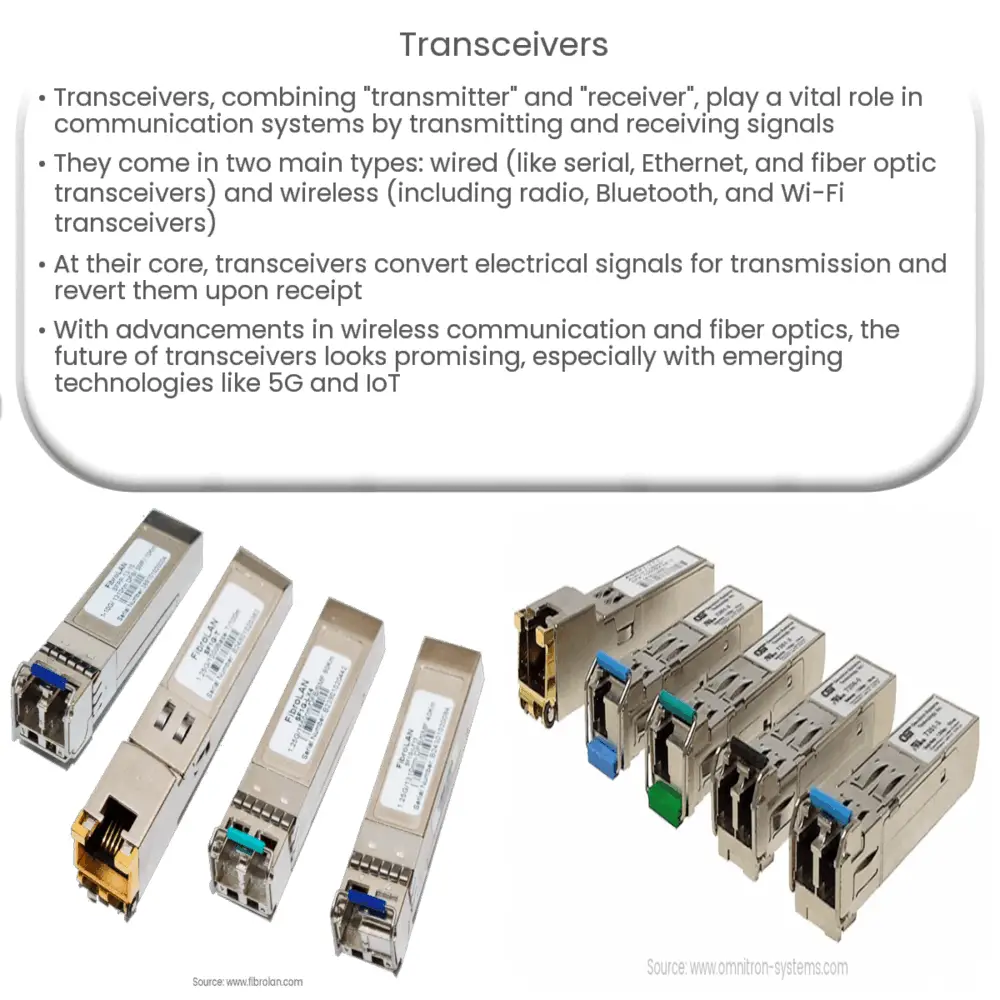Explore the importance of transceivers in communication systems, their types, functions, advancements, applications, and future directions.

Understanding Transceivers
In the realm of telecommunications and networking, a device that serves a crucial function is the transceiver. This term is a fusion of ‘transmitter’ and ‘receiver,’ which essentially indicates its primary functionality. Transceivers are capable of both transmitting and receiving signals, making them a vital part of any communication system.
Types of Transceivers
Transceivers can be divided into two main types: wired and wireless. Each category has its distinct characteristics and applications, making them suitable for different environments and requirements.
Wired Transceivers
-
Serial Transceivers: These are commonly found in personal computers where they facilitate data transmission over serial communication. An example is the RS-232 standard used in older computers.
-
Ethernet Transceivers: These are used in wired Ethernet networks and are integral to the function of network interface cards (NICs). They handle the conversion of data into signals that can be transmitted over network cables, and vice versa.
-
Fiber Optic Transceivers: These are a type of Ethernet transceiver that convert electrical signals into light signals, transmitting them over fiber optic cables. This type of transmission enables faster data speeds over longer distances compared to conventional Ethernet cables.
Wireless Transceivers
-
Radio Transceivers: Used in radio broadcasting and wireless communication devices such as mobile phones, these transceivers send and receive radio signals.
-
Bluetooth Transceivers: These transceivers are used in Bluetooth devices to facilitate wireless communication between devices in close proximity.
-
Wi-Fi Transceivers: Almost all modern digital devices, such as smartphones, laptops, and tablets, have a Wi-Fi transceiver that allows them to connect to wireless networks and access the internet.
In conclusion, transceivers serve as the foundation for modern communication systems, facilitating the exchange of information over various types of networks. Their ubiquity in our daily lives underscores their importance in the digital age.
Functionality of Transceivers
At a fundamental level, a transceiver operates by converting transmitted electrical signals into a form that can be easily transmitted, either over a wire or through space, and then converted back into electrical signals once received. This involves a process called modulation for transmitting, and demodulation for receiving.
Advancements and Future Directions
Transceiver technology has come a long way since its inception, and continues to advance rapidly. The future of transceivers lies in the evolution of wireless communication systems and the increasing use of fiber optics for data transmission. Furthermore, the advent of technologies such as 5G and the Internet of Things (IoT) has brought new advancements and demands for more efficient and powerful transceivers.
Applications of Transceivers
Transceivers have diverse applications, spanning multiple industries and technologies. They are widely used in communication networks like the internet, in broadcasting for radio and television, and in data centers for facilitating high-speed data transfer. Furthermore, they also play a crucial role in wireless communication devices such as mobile phones, routers, and satellite communication systems.
Conclusion
In conclusion, transceivers serve as the cornerstone for a multitude of communication systems, supporting the seamless exchange of information over different types of networks. These devices have revolutionized the way we communicate and transmit data, and as technological advancements continue, their importance and influence will undoubtedly grow. The continued evolution of transceiver technology stands to enhance connectivity, increase data transfer speeds, and facilitate the growth of future-forward technologies such as IoT and 5G.

